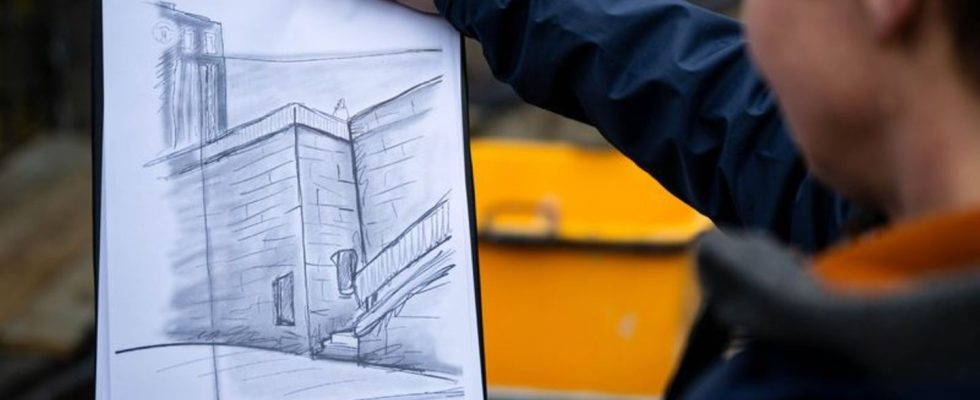Culture of remembrance
Memorial to the looting of Jews during the Nazi era is inaugurated
A sketch by Evin Oettingshausen shows what the “Aryanization” memorial will look like in the future. photo
© Sina Schuldt/dpa
Furniture, jewelry and art: The Nazi regime deprived the Jewish population of their belongings on a large scale. A memorial that is unique in Germany will now commemorate this in Bremen.
A new memorial in Bremen commemorates the systematic expropriation and robbery of Jews during the Nazi era. “We have to ask ourselves on many levels how we want to deal with this heritage. In this respect, I see the structural completion of the “The memorial is not the end point of the project, but rather a double point,” emphasized initiator Henning Bleyl before today’s inauguration.
According to the Bremen Senate, it is the first memorial nationwide that explicitly addresses the expropriation, removal and exploitation of Jewish property.
Gaps in history that persist to this day
The memorial based on a design by Evin Oettingshausen stands on the Weser – where ships brought the stolen furniture and objects from the occupied countries in Western Europe to Bremen. A window provides a view into a six-meter-high shaft and only gives an idea of what lies beneath. “The shaft is intended to signal the gaps in history that continue to this day,” explained Evin Oettingshausen. From the Weser promenade, views through side windows into the interior of the memorial are possible, where reliefs of furniture can be seen – “empty spaces embedded in concrete”.
Henning Bleyl came up with the idea for the memorial after the Swiss logistics group Kühne and Nagel omitted the complications involved in transporting the Jewish looted property at a celebration of the company’s 125th anniversary. A year later, when the company applied for public space for the new building of its headquarters in Bremen, the journalist started a fundraising campaign together with the “taz” and also submitted a purchase bid – for four square meters directly in front of the company headquarters. The Senate gave the logistics company the contract, but decided to build the memorial at a different location.
A culture of remembrance should be continued
Since not only the state but also companies and private individuals benefited at the time, the construction costs of around half a million euros were not only borne by the public sector. 62,000 euros come from donations from private individuals. The association of Bremen forwarders also took part – and thus also Kuehne and Nagel as members of the association.
The culture of remembrance should be continued in Bremen. “A working group is currently being set up that will make suggestions to the Senate as to the structure in which the topic should be implemented,” said a spokesman for the Senator for Culture. Meanwhile, Evin Oettingshausen and Henning Bleyl want to offer, on their own initiative, remembrance-political bike tours to places in Bremen that are linked to the deprivation of the Jewish population. “In the Weser Stadium, for example, large quantities of “used top beds, under beds and pillows” were on offer,” reported Bleyl.
The National Socialists called the confiscation, removal and sale of the belongings of deported or refugee Jews “M-Aktion”. The M stood for furniture. The Nazi regime, but also shipping companies, museums and private individuals benefited.

